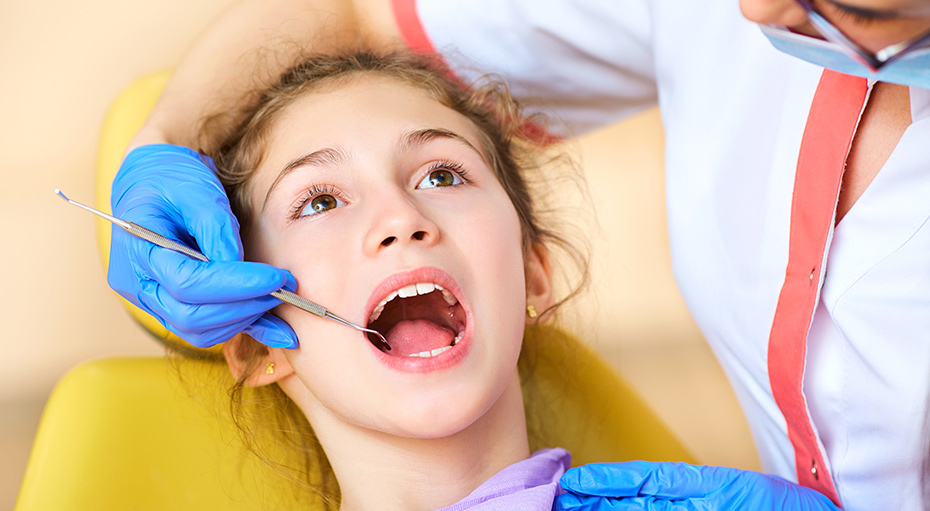Legacy Orthodontics - Questions
Legacy Orthodontics - Questions
Blog Article
More About Legacy Orthodontics
Table of ContentsA Biased View of Legacy OrthodonticsSome Ideas on Legacy Orthodontics You Should KnowThe 5-Second Trick For Legacy OrthodonticsThe 4-Minute Rule for Legacy OrthodonticsLegacy Orthodontics - The Facts
At Advanced Orthodontics, we offer individuals with a alternative therapy experience. In enhancement, we provide flexible treatment routines, versatile payment alternatives and a fun, satisfying experience. orthodontist. Telephone call ( 480) 357-4900 today to find out more and timetable a consultation.An orthodontist is a dental professional trained to identify, prevent, and deal with teeth and jaw irregularities. They deal with existing problems and are trained to determine problems that might create in the future. Orthodontists collaborate with individuals of every ages, from kids to adults. Individuals often connect a best smile with health.
Malocclusion, or misaligned teeth, can cause dental issues, consisting of dental cavity, gum disease, and hard or excruciating chewing. Not everyone is born with straight teeth. If you have a poor bite or huge spaces in between your teeth, you may wish to consult a dentist focusing on orthodontic treatment.
Little Known Questions About Legacy Orthodontics.
( Photo Credit Rating: DigitalVision/Getty Images) Orthodontists use dealt with and detachable oral devices, like dental braces, retainers, and bands, to transform the position of teeth in your mouth. Orthodontic therapy is for dental irregularities, consisting of: Uneven teethBite problems, like an overbite or an underbiteCrowded teeth or teeth that are as well much apartJaw misalignmentThe objective of orthodontic treatment is to improve your bite.
A healthy and balanced bite ensures you can consume, eat, and talk properly. While you could consider orthodontists as mainly for children or teenagers who need dental braces, they can correct dental troubles at any type of age. Orthodontists participate in college, dental college, and orthodontic college. After graduation, they spend 2 or 3 years in an orthodontic residency program.
All orthodontists are dental professionals, but not all dental professionals are orthodontists. Orthodontic residency programs supply intensive, focused instruction for dental specialists. They concentrate on 2 locations: Just how to properly and securely relocate teeth How to appropriately lead development in the teeth, jaw, and faceOnce an orthodontist has actually finished training, they have the alternative to come to be board licensed.
6 Simple Techniques For Legacy Orthodontics
Misalignment, or malocclusion, is one of the most usual reason individuals see an orthodontist. It is hereditary and is the outcome of size differences between the upper and reduced jaw or between the jaw and teeth. Malocclusion causes tooth congestion, a twisted jaw, or uneven bite patterns. Malocclusion is normally treated with: Your orthodontist attaches metal, ceramic, or plastic square bonds to your teeth.
If you have only minor malocclusion, you may be able to make use of clear dental braces, called aligners, as opposed to conventional dental braces (https://va-leesburg.cataloxy.us/firms/www.legacyortho.com.htm). Some people require a headgear to help relocate teeth right into line with stress from outside the mouth. After braces or aligners, you'll need to wear a retainer. A retainer is a customized tool that maintains your teeth in position.
They can develop additional room in the mouth without having to pull teeth. Orthodontists make use of cables, surgical screws, or plates to sustain your jaw bone.
You might need to see an orthodontist if you have: Crowding or not sufficient space for all of your teethOverbite, when your upper teeth come over your base teethUnderbite, when your bottom teeth are too much forwardSpacing or issues with gapsCrossbite, which is have a peek at these guys when your upper teeth fit behind your bottom teeth when your mouth is closedOpen bite or a vertical gap between your front bottom and upper teethMisplaced midline, when the facility of your base and top teeth don't line up Remedying an oral malocclusion can: Make biting, eating, and speaking easierImprove the symmetry of our face and your total appearanceEase discomfort from temporomandibular joint disordersDifferent your teeth and make them much easier to cleanse, helping protect against dental caries or dental caries It's usually a dentist that first notifications misaligned teeth throughout a regular examination.
The smart Trick of Legacy Orthodontics That Nobody is Discussing

Throughout your initial orthodontic examination, you'll likely have: An oral examPhotos taken of your face and smileDental X-raysPanoramic (360 degree) X-rays of your face and headImpressions to create mold and mildews of your teethThese examinations will certainly help your orthodontist understand how to continue with your therapy. leesburg orthodontist. An orthodontist is a dental expert that's had training to treat your teeth and jaw
Orthodontists may do surgical treatment, exams,X-rays,and more to aid you obtain a much more comfortable, healthier smile. An orthodontist is concentrated on your bite, so something like a damaged tooth would be handled by a dental expert. Orthodontists are dental experts but not all dentists are orthodontists. Orthodontists are focused on your bite, or the means your teeth fit together, and the straightness of your teeth.
Ever questioned how stars constantly appear to have perfectly lined up teeth? The response frequently exists in the knowledgeable hands of an orthodontist. However exactly what does an orthodontist do? Orthodontists are oral experts who concentrate on correcting abnormalities in the teeth and jaws. Their proficiency exceeds just developing a stunning smile; it encompasses improving your general oral health and wellness and function.
3 Simple Techniques For Legacy Orthodontics

, orthodontists have a diverse toolkit at their disposal. These reliable braces use a system of brackets adhered to the teeth and linked by cords.
Clear aligners, like Invisalign, are a popular choice for clients looking for a more very discreet therapy alternative. These detachable trays are customized to considerably shift the teeth's setting. Headgear may be made use of in conjunction with dental braces or aligners to use added targeted forces, particularly for correcting jaw discrepancies. In cases of slim jaws, palatal expanders can be made use of to create area for correct tooth positioning.
Report this page